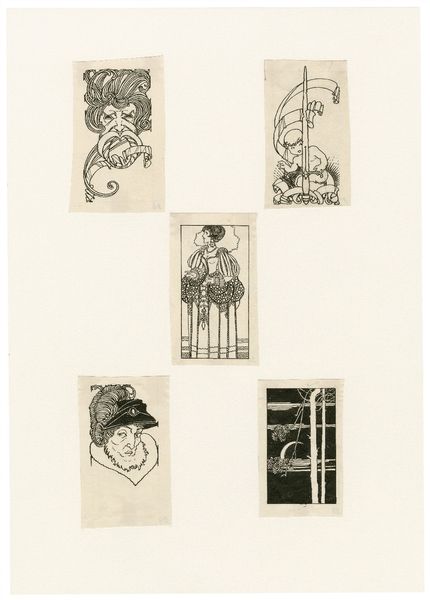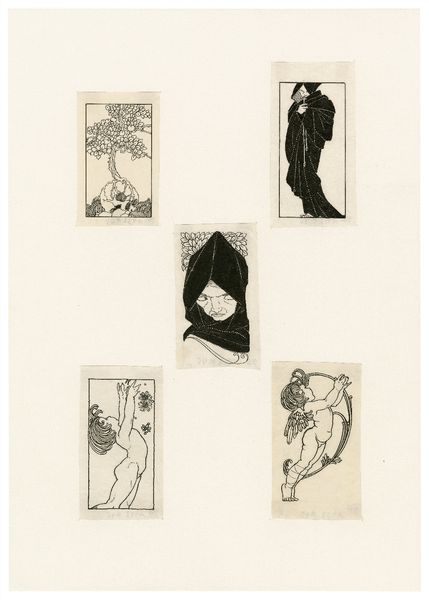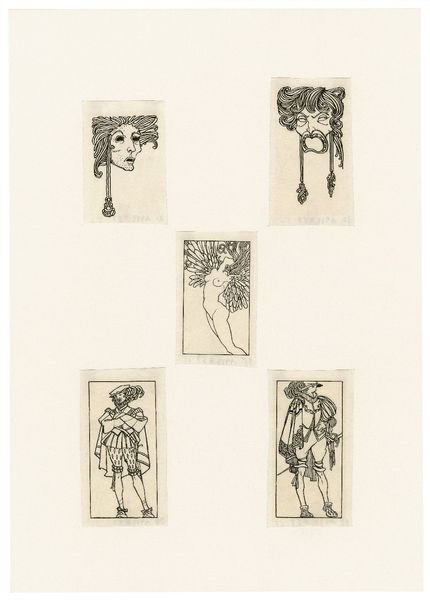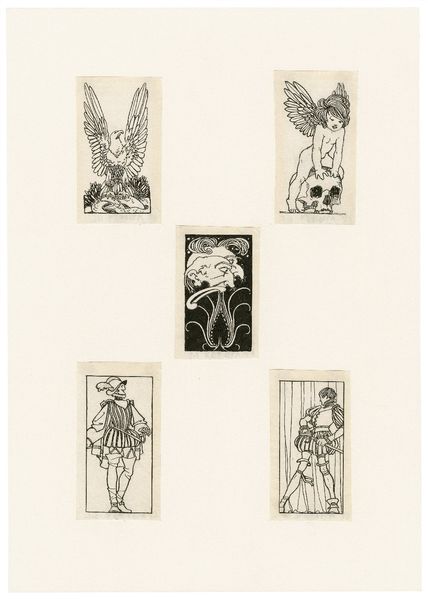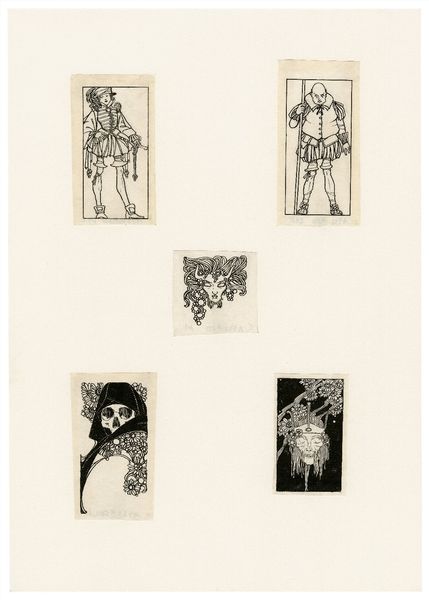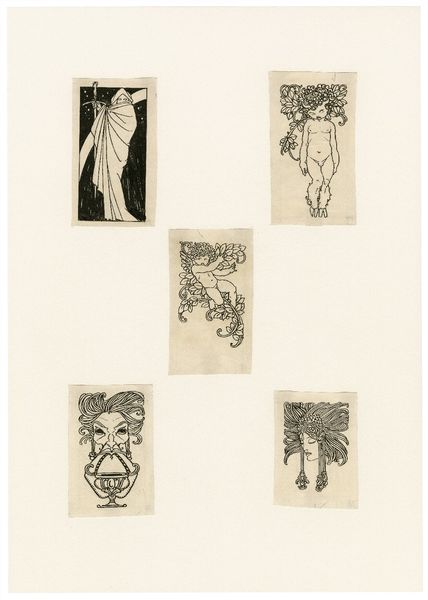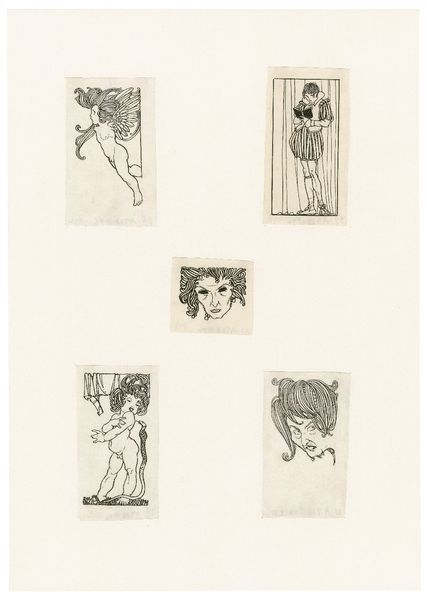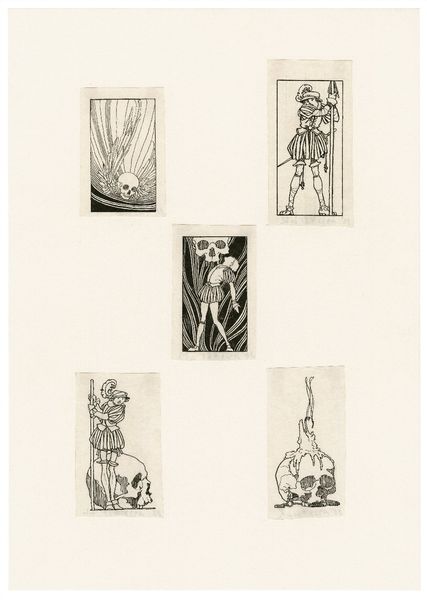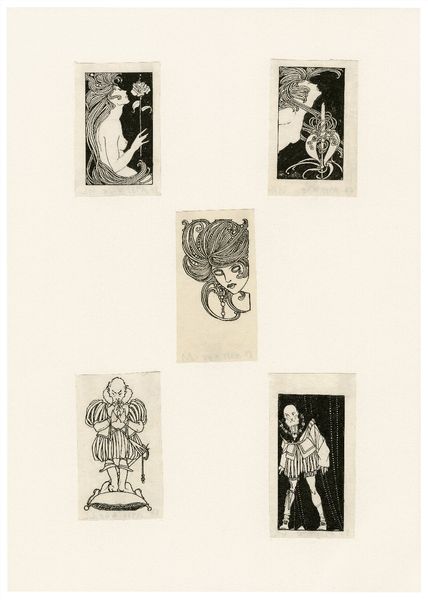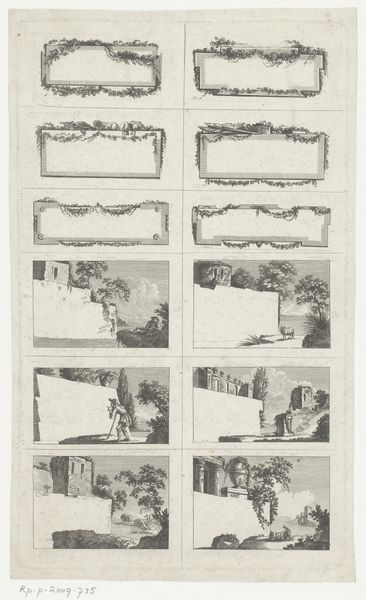
drawing, print, ink
#
portrait
#
drawing
# print
#
pen illustration
#
old engraving style
#
figuration
#
ink
#
momento-mori
#
linocut print
#
line
#
symbolism
#
miniature
Copyright: Public domain
Curator: This suite of miniatures, attributed to John Austen, presents a rather grim visual meditation, seemingly titled "Hamlet". Editor: My first impression? Striking contrasts. The dense black ink against the stark white ground creates a powerful, almost oppressive atmosphere. It feels inherently dramatic. Curator: Indeed. Austen was working in the early 20th century, a period deeply engaged with fin-de-siècle anxieties and the aftermath of immense social upheaval from the Industrial Revolution, as well as The Great War; such preoccupation is reflected here in themes of mortality and melancholic contemplation. Look at the miniature of the skull adorned with flowers—a clear "memento mori," a reminder of death amidst beauty. Editor: From a formal standpoint, the linear quality is captivating. Notice how the artist uses line weight and density to suggest volume and texture. In the panel with Ophelia, the flow of lines captures a real sense of movement. But this isn't just illustration; there's a symbolic weight that feels intentional. Curator: I agree. Symbolism was rife in art and literature at the time. It’s likely Austen meant to portray something universal through such an individualized portrait of Hamlet; the visual vocabulary certainly resonates with period interests in dreamscapes, the occult, and psychoanalysis. Editor: It makes one wonder if these are meant to be narrative glimpses into the play's key themes, or if the intention was purely to present a sequence of emotional states using these figures. The overall mood is what stands out most. Curator: Possibly both. By condensing Hamlet to these stark, graphic miniatures, Austen is participating in the aesthetic debates regarding what art’s function could or should be in the age of reproducibility. The subject is at once profoundly individual and available for mass consumption via the illustrated print. Editor: Ultimately, these miniatures create a very complete viewing experience given their condensed nature. I’m compelled by the degree of control the artist clearly employed. Curator: These artworks provide unique access into the anxieties present within culture in the early Twentieth Century; Austen manages to successfully combine elements of high and low culture.
Comments
No comments
Be the first to comment and join the conversation on the ultimate creative platform.
